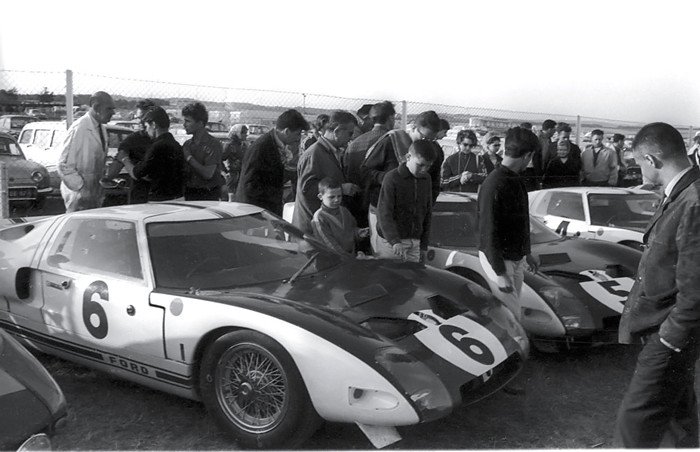The Ford team gathered at the Hotel de Paris the Monday morning following race day. Awaiting them was Ford executive Leo Beebe. The forty-six-year-old was Ford II’s trusted man for progress reports. Sure, the prototypes didn’t hit a home run, but Wyer believed there were positives to take from the team’s debut at Le Mans. Leo Beebe didn’t think so.
“I don’t know anything about racing,” he began. The transmissions failed, “You could lay it to a gearbox,” Beebe said, “but if the gearbox didn’t work how can we know anything else would work?”
They had to remember Henry II parted with a lot of dollars on the prototypes. Anything less than a win was a bad performance. The team had another chance, though – the 12 Hours of Reims. It was only a fortnight away. This came too early for the drivers. If they were going to race against Ferrari’s men without enough time to fix the car, results couldn’t be any different. Besides, the 12-hour race started at midnight with many undulating straights to contend with. The chances of success were simply stacked too high on the negative. But Beebe’s word was final.
And so two weeks later, the Ford team, led by Phi Hill, took on the challenge at Reims. Again halfway through the race, by sunrise, the Ford team was done. Mechanical failure after mechanical failure, all three cars pulled out of the race. Enzo Ferrari coasted to success, his cars finishing first to fourth.
But Ferrari wasn’t done, yet. The Grand Prix at Monza was in his sight, followed by the Italian Grand Prix. Politics played out leading to the 1964 Grand Prix, though. Surtees was Ferrari’s flagship driver, Lorenzo Bandini was number two. Having come up through the ranks working in Milan, the hometown of team manager Eugenio Dragoni, Bandini was naturally more favoured than Surtees.
Surtees’ quest to win the Grand Prix on two wheels and four saw him up against his teammate late in the season, with barely any press support from his own team manager.“Any right-thinking Italian should be able to see that in Bandini, Italy has a true World Champion,” Dragoni said to reporters. Still, Surtees fought his way through, winning the Monza battle in record speed and with Bandini finishing third. His quest achieved, Surtees headed to the podium with chants of Il Grande John from the crowd.
Back in Dearborn. There were brewing concerns over the GT40s. None had finished a race, even after the third attempt. The only consolation was Shelby’s Cobra success in the GT class. Beebe wanted a change, something had to be done if they stood a chance to stop Ferrari the following year.
An idea came up, there was a 427-cubic-inch engine available, the same engine that had displaced other racers at the 1963 Daytona 500. The engine had a size more than twice the one Surtees raced at Reims. But Wyer didn’t feel the problem was all in the engine department. No constructor had ever injected such massive engine in a lightweight sports car. Sure, “More power is always welcome,” Wyer said, “but not at the expense of development and durability. I understand the 427 engine weighs 600 pounds. This would result in a car weighing 3,000 pounds. For practical purposes it would be a new car. We’d be putting back the clock exactly 12 months and running the risk of going to Le Mans again with a car that was untested and untried.” From fuel consumption to the braking system and the transmission, a number of problems also had to be addressed if the idea was to materialize.
The Nassau Speed Week was only weeks away, and so Wyer headed back to London to get two Fords ready in time for the duel in Bahamas. It was a minor race, and the Ferrari threat wasn’t there, a win was all but expected this time. But things only got worse under the pounding Carribean sun; mechanical failures ushered Phil Hill and Bruce McLaren to an early exit.
This was the peak of it all for Leo Beebe. Beginning his post race meeting “I don’t know anything about racing.” He said addressing Wyer, “But there is one thing that has become increasingly apparent to me in the past few months. You don’t either!” Beebe went for the change, stripping the responsibility of constructing Ford’s Le Mans prototype off Wyer’s hands and handing it over to Carroll Shelby. Shelby brought in his trusted technician Phil Remington, hired Carroll Smith as project manager and signed on Ken Miles as competition manager.
With the 1964 season coming to an end, all eyes turned to Mexico City for the Mexican Grand Prix. Surtees only needed to finish second or better and he’d be World Champion. As the race entered it’s final lap, Surtees trailed in third, but he still had enough muscle to outrun his teammate Lorenzo Bandini to finish in second. And that did it! He officially became the first man to be crowned World Champion on two wheels and four. So many hands awaited Surtees, including those of Prince Philip of England. He was also given a Longines watch by the president of Mexico. But dinners and pleasantries over, Surtees switched focus. Ahead lay the 1965 season.



